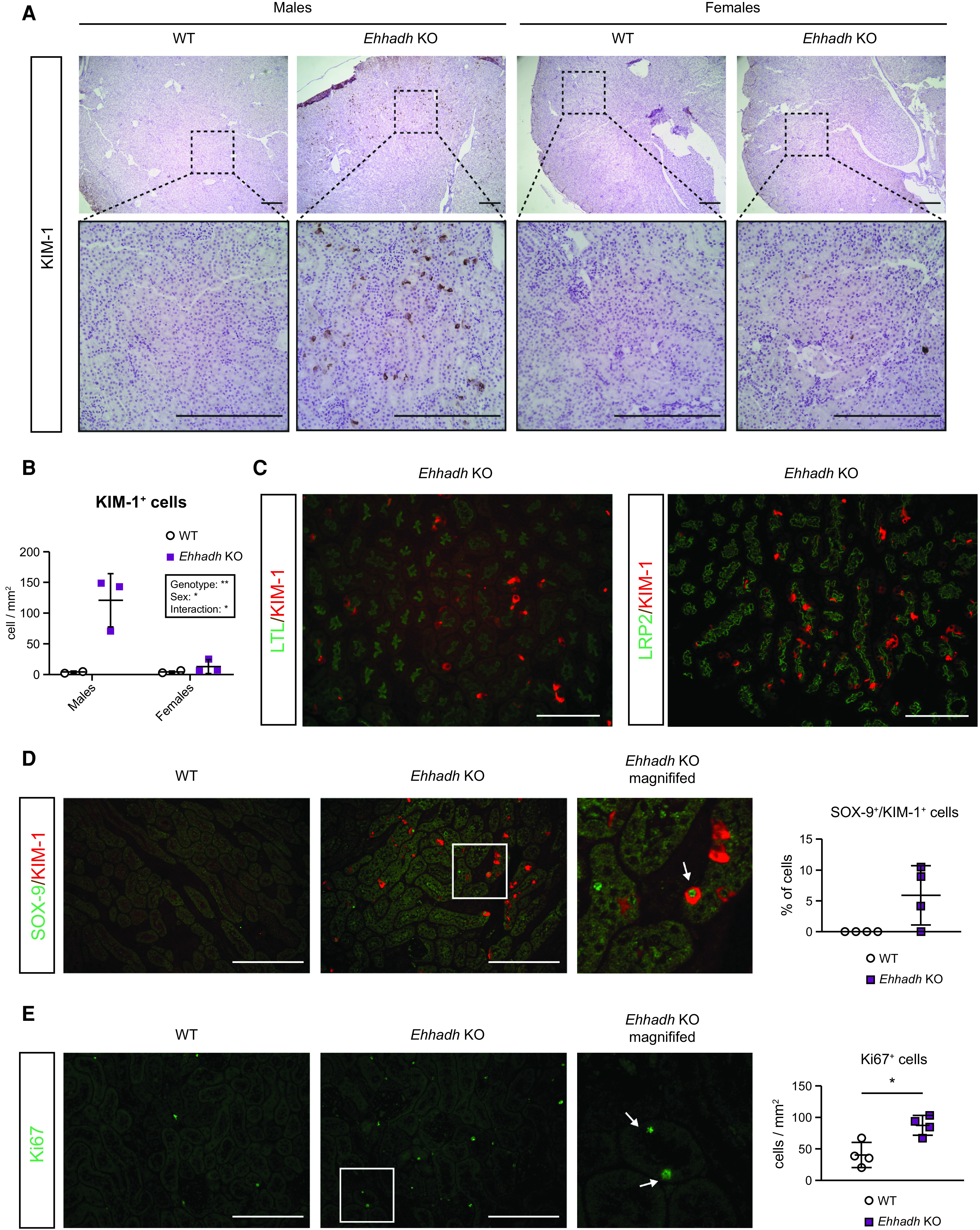Figure 3.

EHHADH deficiency activates the proximal tubule injury response in male mice. (A) Representative images of kidney injury molecule-1 (KIM-1) immunohistochemistry (IHC) in the cortical area of WT and Ehhadh KO mouse kidneys (n=3–4 per sex and genotype). Upper panels: 4× objective. Lower panels: 20× objective. (B) Quantification of KIM-1+ cells per mm2 in WT and Ehhadh KO male and female mice. (C) Representative images of double immunofluorescence (IF) of KIM-1 with pantubular markers (LTL and LRP2) in the kidneys of Ehhadh KO male mice. There was no KIM-1 signal in male WT mice, or female WT and Ehhadh KO mice (not shown). (D) Representative images of double IF of KIM-1 (red) and SOX-9 (green) in WT and Ehhadh KO male mice (n=4). Inset shows expanded region of the Ehhadh KO section. The white arrow points to a double positive Sox9+/Kim-1+ cell. Graph shows quantification of double positive SOX-9+/KIM-1+ cells in WT and Ehhadh KO mice. (E) Representative images of Ki67 IF (green) in WT and Ehhadh KO male mice (n=4). Inset shows expanded region of the Ehhadh KO section. White arrows point to Ki67+ cells. Graph shows quantification of Ki67+ cells per mm2 in WT and Ehhadh KO mice. Data are presented as mean±SD with individual values plotted (D) and (E). Statistical significance was tested using unpaired t test with Welch’s correction (D) and (E). *P<0.05. Scale bar = 250 µm (A), 100 µm (C)–(E).
